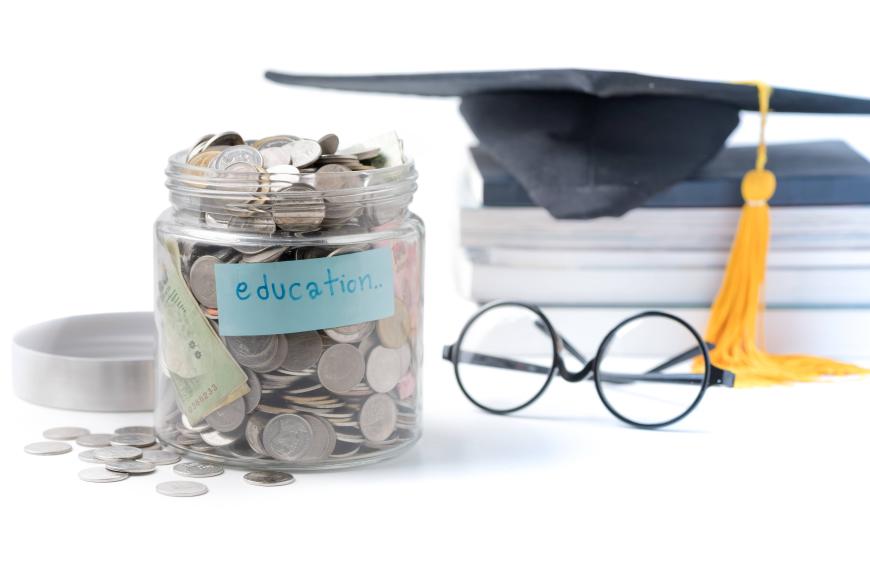
Is the new SAVE Plan for student loan repayment right for you? [learn more]
Updated 10.5.23
A new Income-Driven Repayment (IDR) Plan option is now available for federal student loans — the Saving on a Valuable Education (SAVE) Plan. For many borrowers — including you — it might be a way to lower one’s monthly payment.
Introducing the SAVE Plan!
The U.S. Department of Education has several Income-Driven Repayment (IDR) plans for federal student loan borrowers. All these plans determine your monthly payment by using a percentage of your household’s discretionary income — your adjusted gross income (AGI) minus 150% of the poverty level based on family size. The SAVE Plan is a new IDR option, replacing the REPAYE (Revised Pay as You Earn) Plan. The SAVE Plan increases the income exemption amount to 225% of the poverty level. This means a smaller amount of your income will be used to calculate your payment, which means a smaller student loan payment!
Other benefits:
- More borrowers will qualify for $0 monthly payments — $32,800 or less AGI for a single borrower, $67,500 or less AGI for a family of four.
- If you make your monthly SAVE Plan payment, your undergraduate loan balance will not grow due to unpaid interest — and the unpaid interest will not be added on later if you switch payment plans.
- If you are married and file taxes separately, the SAVE Plan will not take your spouse’s income into consideration when calculating your IDR payment. (Please consult with a tax professional to discuss the pros and cons.)
What will a payment look like under the SAVE Plan?
Let’s see what the SAVE Plan will mean when payments resume in October for a borrower who is married with two kids, has an $80,000 AGI and currently uses the REPAYE Plan.
| REPAYE (current IDR plan) | SAVE Plan (new IDR plan replacing REPAYE) |
| AGI minus 150% of poverty line (which is $45,000) | AGI minus 225% of poverty line (which is $67,500) |
| $80,000 minus $45,000 = $35,000 discretionary income | $80,000 minus $67,500 = $7,500 discretionary income |
| 10% of $35,000 = $292 monthly | 10% of $7,500 = $106 monthly |
The monthly payment is much lower with the new SAVE Plan, so now you will want to ask yourself:
- What does the standard payment plan, based on my loan balance and interest rate, look like compared to the new SAVE Plan?
- How long will it take me to pay off my loans with each option?
- Do I want to pay off my loans faster or have the lowest monthly payment available?
- Do I qualify for Public Service Loan Forgiveness (PSLF)? (To qualify for PSLF, you will need to be enrolled in an IDR plan. The SAVE Plan is a qualified payment option.)
- Is my repayment plan choice affordable in my budget?
Helpful Tip: Use studentaid.gov’s free loan simulator to calculate and compare all loan repayment options.
There’s more! Changes coming to the SAVE Plan in summer 2024
- Payments will be reduced further for undergraduate loans — cut in half, in fact! They will be based on 5% of your discretionary income instead of 10%.
- If you have undergraduate and graduate loans in one consolidation loan, the monthly payment will be a weighted average of the original loan balances.
- Borrowers with a starting balance of $12,000 or less will have a 10-year repayment timeline. After the 10 years, any remaining amount will be forgiven. Previous payments and certain periods of deferment and forbearance will count towards this timeline. Every additional $1,000 to the student loan balance adds another year before loans are forgiven, up to a 20- or 25-year maximum (depending on whether the loans are undergraduate or graduate loans).
- Borrowers who are 75 days late on their payments will automatically be enrolled in an IDR Plan if they agree to allow the U.S. Department of Education to access their tax information.
How do I apply for the SAVE Plan?
You can apply for the SAVE Plan at studentaid.gov. Please keep in mind that your loan servicer will need time to process your request, since they need to obtain documentation to verify your income and family size. Wait times might vary, so your loans might be put into administrative forbearance. That means you might not have to make a payment right away. We recommend putting your estimated student loan payment into savings in the meantime.
To apply:
- First, confirm what repayment plan you are enrolled in.
- Log into your account at studentaid.gov.
- Click on “View Details,” then “View Breakdown,” then “Loan Details” for each loan listed to see loan type, payment history and payment plan chosen.
- If you are already enrolled in the REPAYE Plan option, you have automatically been switched to the SAVE Plan.
- If you decide to apply for the SAVE Plan instead of a general repayment option:
- Go to the “Apply for an Income-Driven Repayment Plan” section on this studentaid.gov web page. The SAVE Plan is one of the four options available.
- Is the SAVE Plan option not available? You might have an older or different type of federal student loan that requires a Direct loan consolidation first. Learn about the pros and cons here.
- Once set up on the SAVE Plan, if you authorize a secure disclosure of tax information, you will be enrolled into the auto-recertification program. You will be prompted to do this on studentaid.gov in the future. This means the U.S. Department of Education will automatically get your updated IRS information annually. One less thing for you to remember to do! (You can always recertify manually if your household size increases or income decreases.)
- The updated IDR application will allow you to save your progress, enroll in less than 10 minutes, and track your application status.
Other steps to take before student loan repayment restarts
Whether or not the SAVE Plan is a good option for you, there are other steps you will want to take. This includes:
- Confirming who is your loan servicer.
- Checking your eligibility for student loan forgiveness under programs other than PSLF.
- Looking at the U.S. Department of Education’s new Fresh Start program if your loans are in default.
Read our blog for more information on preparing for student loan repayments resuming.
Our certified student loan counselors can explore repayment options with you for all your student loans, whether they are federal or private, and they can work with you on customized solutions that meet your needs. Learn more about our student loan counseling services, and call 888.577.2227 to set up a free, confidential appointment.

Kim Miller is a certified financial counselor with LSS Financial Counseling.
